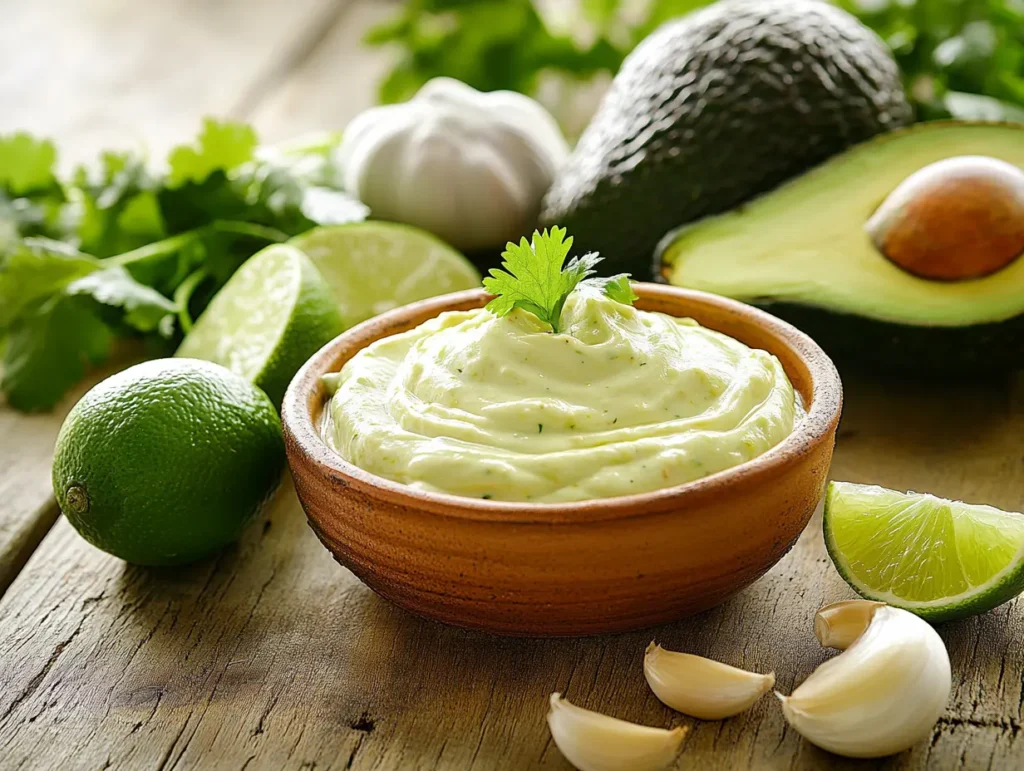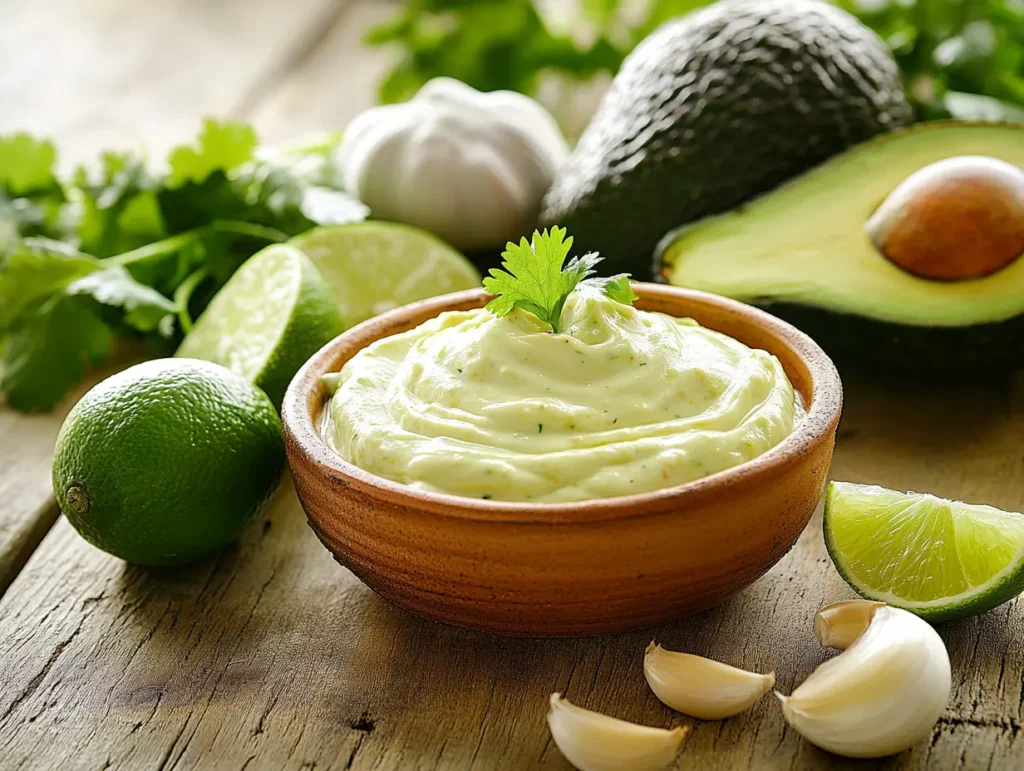1. Introduction
When it comes to creating the perfect breakfast burrito, it’s not just about the eggs, cheese, or the crispy bacon tucked inside. The real secret to elevating your breakfast burrito is in the sauce. A great sauce can turn an ordinary burrito into a gourmet experience, adding layers of flavor, moisture, and a touch of indulgence that makes every bite irresistible.
Breakfast burritos are a beloved morning staple in the U.S., known for their versatility and heartiness. Whether you’re grabbing one from your favorite local eatery or assembling one at home, the sauce plays a critical role in tying together the flavors of the fillings. This article will guide you through the world of breakfast burrito sauces—from understanding their importance to creating your own signature blend. Let’s explore what makes sauces the unsung hero of the breakfast burrito!
2. The Role of Sauce in Breakfast Burritos
A breakfast burrito isn’t just a combination of ingredients—it’s an experience. While the fillings provide substance, it’s the sauce that creates a harmonious balance between flavors and textures. Here’s why sauces are indispensable:
2.1 Enhancing Flavor Profiles
Breakfast burrito sauces are like a conductor in an orchestra, ensuring every ingredient plays its part perfectly.
- Bringing Balance: A tangy sauce like salsa verde can cut through the richness of eggs and cheese. A smoky chipotle sauce adds depth to meats like sausage or bacon.
- Adding Complexity: Sauces introduce layers of flavor that might otherwise be missing. A creamy avocado crema can provide freshness, while a spicy mayo adds a fiery kick.
2.2 Balancing Textures
The texture of a burrito can sometimes feel monotonous. Sauces introduce a smooth, creamy element that contrasts beautifully with crispy hash browns, soft scrambled eggs, or crunchy vegetables.
- For example, a thin yogurt-based sauce spreads evenly, while thicker options like chipotle mayo can coat each bite for a richer experience.
2.3 Adding Moisture to the Burrito
Nobody enjoys a dry breakfast burrito. Sauces are the ultimate remedy, adding much-needed moisture that keeps each bite enjoyable.
- They ensure that even a reheated burrito feels fresh and flavorful.
- Some sauces, like a spicy salsa roja, can also add an extra layer of juiciness without overpowering the other ingredients.
3. Common Ingredients in Breakfast Burrito Sauces
Breakfast burrito sauces are as diverse as the burritos themselves. From creamy and tangy to spicy and smoky, the secret lies in the ingredients. Knowing the essential components can help you create a sauce that perfectly complements your burrito.

Alt Text: Fresh ingredients for making breakfast burrito sauce, including cilantro, avocados, and chipotle peppers.
3.1 Base Components
The foundation of any good sauce starts with a base. The base not only defines the texture but also provides a neutral canvas for additional flavors. Common bases include:
- Sour Cream: A tangy and creamy option, ideal for balancing spicy ingredients like jalapeños or hot sauce.
- Mayonnaise: Adds richness and a smooth consistency, often used in chipotle or spicy mayo sauces.
- Greek Yogurt: A healthier alternative that brings creaminess with a slight tang, perfect for lighter sauces.
- Avocado: When blended, it creates a rich, buttery base that pairs wonderfully with vegetarian or vegan burritos.
- Cashew Cream: A dairy-free alternative for those who want a vegan-friendly option without sacrificing creaminess.
3.2 Flavor Enhancers
These are the ingredients that give your sauce its unique personality. From spicy to smoky to tangy, enhancers are what make the sauce memorable.
- Citrus Juices: Lime or lemon juice brightens the flavor and prevents heaviness.
- Garlic and Onion Powders: These pantry staples provide a subtle depth of flavor.
- Chipotle Peppers in Adobo Sauce: Adds a smoky heat and complexity, making it a favorite for chipotle-based sauces.
- Hot Sauce: A quick way to add heat. Variants like Tabasco, Sriracha, or Cholula can dramatically alter the flavor profile.
3.3 Herbs and Spices
Fresh or dried herbs and spices can elevate a basic sauce to gourmet status.
- Cilantro: Offers a fresh, citrusy flavor that pairs beautifully with Mexican-inspired burritos.
- Dried Spices: Smoked paprika, cumin, and chili powder add warmth and depth.
- Fresh Herbs: Parsley, dill, or green onions can add a bright, herbal note that complements rich fillings.
By mixing and matching these ingredients, you can craft a sauce tailored to your taste, ensuring every bite of your breakfast burrito is as delicious as the last.
4. Popular Types of Breakfast Burrito Sauces
While the possibilities for breakfast burrito sauces are endless, some classics stand out for their flavor, versatility, and ease of preparation. Here are a few popular types and how they shine:

Alt Text: Breakfast burrito with eggs, bacon, cheese, and creamy chipotle sauce drizzle.
4.1 Creamy Chipotle Sauce
This smoky and spicy sauce is a favorite for its bold flavor and creamy texture.
- Ingredients:
- 1 cup sour cream
- 2 tablespoons chipotle peppers in adobo sauce
- 1 tablespoon lime juice
- Salt to taste
- Preparation: Blend all ingredients until smooth. Adjust the spice level by adding more or fewer chipotle peppers.
- Best Pairings: Spicy sausage, scrambled eggs, and roasted potatoes.
4.2 Salsa Verde
A bright and tangy green sauce made from tomatillos, jalapeños, and cilantro.
- Ingredients:
- 6 tomatillos
- 2 jalapeños
- 1 garlic clove
- ½ cup cilantro
- Salt to taste
- Preparation: Roast the tomatillos and jalapeños, then blend with garlic and cilantro. Add salt to taste.
- Best Pairings: Chicken, cheese, and black beans.
4.3 Spicy Mayo
A quick and flavorful option that combines heat and creaminess.
- Ingredients:
- ½ cup mayonnaise
- 1 tablespoon Sriracha
- 1 teaspoon lemon juice
- Preparation: Mix all ingredients until well combined. Adjust spiciness by varying the Sriracha.
- Best Pairings: Crispy bacon, fried eggs, and hash browns.
4.4 Avocado Crema
This sauce combines the richness of avocados with the tang of lime, creating a fresh and creamy option.
- Ingredients:
- 1 ripe avocado
- ½ cup sour cream
- 1 tablespoon lime juice
- Salt and pepper to taste
- Preparation: Blend all ingredients until smooth. Add a splash of water if the sauce is too thick.
- Best Pairings: Vegetarian burritos with grilled vegetables or beans.
4.5 Tahini-Based Sauce
Perfect for vegan options, this sesame-based sauce is nutty and versatile.
- Ingredients:
- 3 tablespoons tahini
- 1 tablespoon lemon juice
- 1 teaspoon garlic powder
- Water to thin as needed
- Preparation: Whisk all ingredients together, adding water until the desired consistency is reached.
- Best Pairings: Sweet potatoes, tofu, and sautéed greens.
5. Crafting the Perfect Breakfast Burrito Sauce at Home
Making your own breakfast burrito sauce at home is not only satisfying but also allows you to customize the flavors to suit your personal preferences. Whether you prefer a spicy kick, a creamy richness, or a tangy zest, creating a sauce from scratch is easier than you think.
5.1 Selecting Quality Ingredients
The secret to a delicious sauce starts with fresh, high-quality ingredients.
- Produce: Use fresh herbs like cilantro, ripe avocados, or plump tomatillos for maximum flavor. Avoid wilted or overripe produce.
- Dairy and Alternatives: For cream-based sauces, opt for full-fat sour cream or yogurt for a rich texture. Vegan options like coconut cream or cashew cream can also deliver exceptional results.
- Spices and Seasonings: Freshly ground spices like cumin or smoked paprika will have a more vibrant flavor than pre-ground alternatives.
5.2 Balancing Flavors
Creating a balanced sauce requires the right mix of acidity, sweetness, and spice.
- Acidity: Add lime or lemon juice for tanginess. A splash of vinegar can also brighten the sauce.
- Sweetness: A teaspoon of honey or agave syrup can counterbalance overly spicy or tangy flavors.
- Spice: Adjust the heat level to your taste. Start small with jalapeños or chipotle and add more gradually.
5.3 Texture Considerations
The texture of the sauce is just as important as its flavor.
- Smooth Consistency: Blend sauces in a high-powered blender or food processor for a silky finish.
- Chunky Sauces: If you prefer a rustic texture, pulse the ingredients to leave small chunks. This works well for salsa-based sauces.
- Adjusting Thickness: If the sauce is too thick, thin it out with water, milk, or a splash of olive oil. Conversely, to thicken a watery sauce, add more creamy ingredients or let it reduce slightly over heat.
Homemade sauces allow you to experiment with unique flavor combinations and tailor your creation to your burrito fillings. The result? A sauce that tastes just right with every bite.
6. Store-Bought vs. Homemade Sauces
When it comes to breakfast burrito sauces, you have two main options: store-bought convenience or the customizability of homemade sauces. Each has its own merits, depending on your time, budget, and culinary goals.
6.1 Pros and Cons of Store-Bought Sauces
Store-bought sauces are a popular choice for their ease of use and variety.
- Pros:
- Ready-to-use, saving you time during busy mornings.
- Available in a wide range of flavors, from mild to extra spicy.
- Long shelf life due to preservatives.
- Cons:
- Often contain additives and preservatives that may affect flavor and healthiness.
- Limited customization—what you buy is what you get.
- Quality can vary widely depending on the brand.
6.2 Benefits of Homemade Sauces
Making your own sauce offers unparalleled flexibility and control.
- Freshness: Homemade sauces use fresh ingredients, making them more flavorful and vibrant.
- Customization: Adjust the spice level, sweetness, or tanginess to your exact preferences.
- Cost-Effectiveness: Preparing a large batch at home can be more economical than repeatedly buying pre-made options.
- Health Benefits: You know exactly what’s going into your sauce, avoiding unnecessary sugars, artificial flavors, or excess sodium.
While store-bought sauces are convenient for last-minute meals, homemade options are the way to go when you want to impress or cater to specific tastes. With just a few minutes of effort, you can create a sauce that’s fresher, healthier, and tailor-made for your perfect breakfast burrito.
7. Pairing Sauces with Breakfast Burrito Fillings
The art of crafting a perfect breakfast burrito goes beyond the fillings—it’s about choosing a sauce that complements and elevates those ingredients. Let’s explore how to pair different sauces with classic and creative burrito fillings to achieve a harmonious balance of flavors.
7.1 Classic Fillings and Complementary Sauces
Breakfast burritos often feature familiar staples like eggs, cheese, potatoes, and meats. Here’s how to pair sauces with these ingredients:
- Eggs and Cheese:
- Pair these mild and creamy fillings with bold, tangy sauces like salsa roja or salsa verde. The acidity in these sauces cuts through the richness of the cheese, adding brightness to every bite.
- Bacon or Sausage:
- Smoky and savory meats are a natural match for creamy chipotle sauce. The smoky flavor of the chipotle complements the charred, savory notes of bacon or sausage.
- Hash Browns or Potatoes:
- Spicy mayo or a garlic aioli enhances the crispy texture of potatoes. These creamy sauces create a satisfying contrast while adding depth.
7.2 Vegetarian and Vegan Options
Plant-based fillings shine when paired with sauces that highlight their natural flavors.
- Grilled Vegetables:
- Try pairing sautéed peppers, zucchini, or mushrooms with a tahini-based sauce. The nutty richness of tahini enhances the earthiness of the vegetables.
- Beans and Rice:
- A fresh avocado crema complements the hearty texture of black beans or refried beans, while also adding creaminess.
- Tofu or Tempeh Scramble:
- Pair these protein-packed options with a spicy salsa verde to add zest and brighten the flavors.
By experimenting with different combinations, you can create a burrito that feels unique and indulgent with every variation.
8. FAQs Section (Answering PAA Questions)
8.1 What is burrito sauce made of?
Burrito sauce typically combines a creamy base (like sour cream, mayonnaise, or yogurt) with flavorful additions like spices, herbs, and tangy ingredients. Some sauces also include heat from chipotle peppers, jalapeños, or hot sauce. Salsa-based sauces use tomatoes, tomatillos, or roasted peppers as their foundation.
8.2 What condiments go in a burrito?
Popular condiments for burritos include:
- Salsa (red, green, or roasted varieties).
- Guacamole for creaminess and richness.
- Sour cream or crema for tang and moisture.
- Hot sauce for those who love extra spice.
- Shredded or melted cheese, which acts as both a filling and a topping.
These condiments can be mixed into the burrito or served on the side for dipping.
8.3 What is McDonald’s breakfast sauce made of?
McDonald’s breakfast sauce, often used in their breakfast sandwiches, combines creamy mayonnaise with tangy mustard, lemon juice, and seasonings. It has a slightly sweet and tangy flavor that pairs well with eggs and cheese.
8.4 What sauce comes with Chick-fil-A breakfast burrito?
Chick-fil-A serves its breakfast burritos with a side of jalapeño salsa. This vibrant sauce is tangy and slightly spicy, made with jalapeños, tomatillos, and other flavorful ingredients. It complements their signature breakfast fillings like chicken, eggs, and hash browns.
9. Tips for Storing and Reusing Breakfast Burrito Sauces
Making breakfast burrito sauce in advance can save time during busy mornings. Proper storage and creative reuse can ensure that no sauce goes to waste while keeping it fresh and flavorful.

Alt Text: Jars of homemade breakfast burrito sauces labeled and stored in a refrigerator.
9.1 Best Practices for Refrigeration
Refrigeration is the most common method for storing sauces. Here’s how to do it right:
- Airtight Containers: Store your sauce in a tightly sealed jar or container to prevent exposure to air, which can cause the sauce to spoil or lose its flavor.
- Label and Date: Always label your containers with the preparation date. Most homemade sauces last 5–7 days in the refrigerator.
- Avoid Contamination: Use a clean spoon each time you scoop out sauce to avoid introducing bacteria.
9.2 Freezing Sauces for Long-Term Storage
If you’ve made a large batch, freezing can extend the shelf life of your sauce.
- Portion Sizes: Freeze the sauce in small portions, like ice cube trays, to thaw only what you need.
- Storage Duration: Most sauces can be frozen for up to three months without losing quality.
- Thawing: Defrost in the refrigerator overnight or gently warm it on the stove while stirring to restore its texture.
9.3 Reusing Leftover Sauce Creatively
Don’t let leftover sauce go to waste—get creative with these ideas:
- As a Dip: Use it as a dip for tortilla chips, veggie sticks, or even fries.
- Spread for Sandwiches: Add a flavorful layer to wraps, burgers, or grilled sandwiches.
- Topping for Bowls: Drizzle over rice bowls, salads, or roasted vegetables for an extra burst of flavor.
- Base for Salad Dressings: Mix with olive oil or vinegar to create a unique dressing.
10. Conclusion
The right sauce can transform a breakfast burrito into a gourmet delight. Whether you prefer the smoky heat of chipotle sauce, the tangy brightness of salsa verde, or the creamy richness of avocado crema, sauces add depth, balance, and personality to every bite.
By making your own sauces, you gain the freedom to experiment with flavors, adjust textures, and create a pairing that perfectly complements your burrito fillings. For those short on time, high-quality store-bought options can still bring plenty of flavor to the table. And with proper storage and creative reuse, you can enjoy your favorite sauces beyond just breakfast burritos.
Now it’s your turn to try these recipes and find your signature sauce. With these tips and ideas, every breakfast burrito you make will be packed with flavor, moisture, and a touch of homemade magic.
